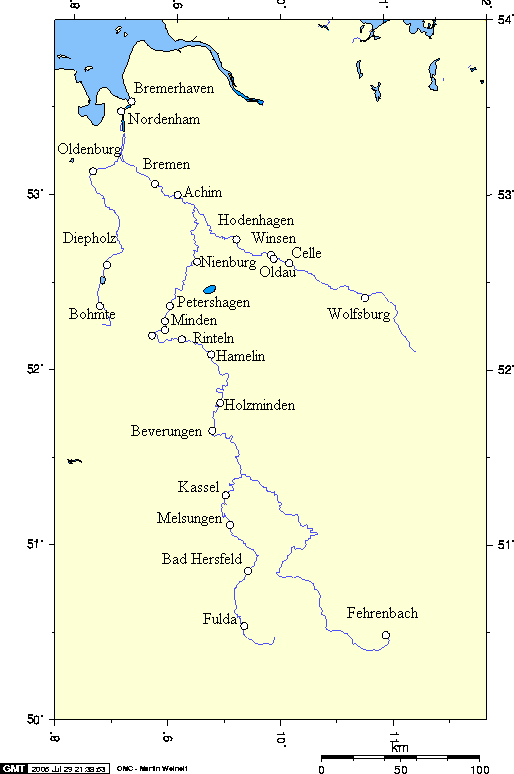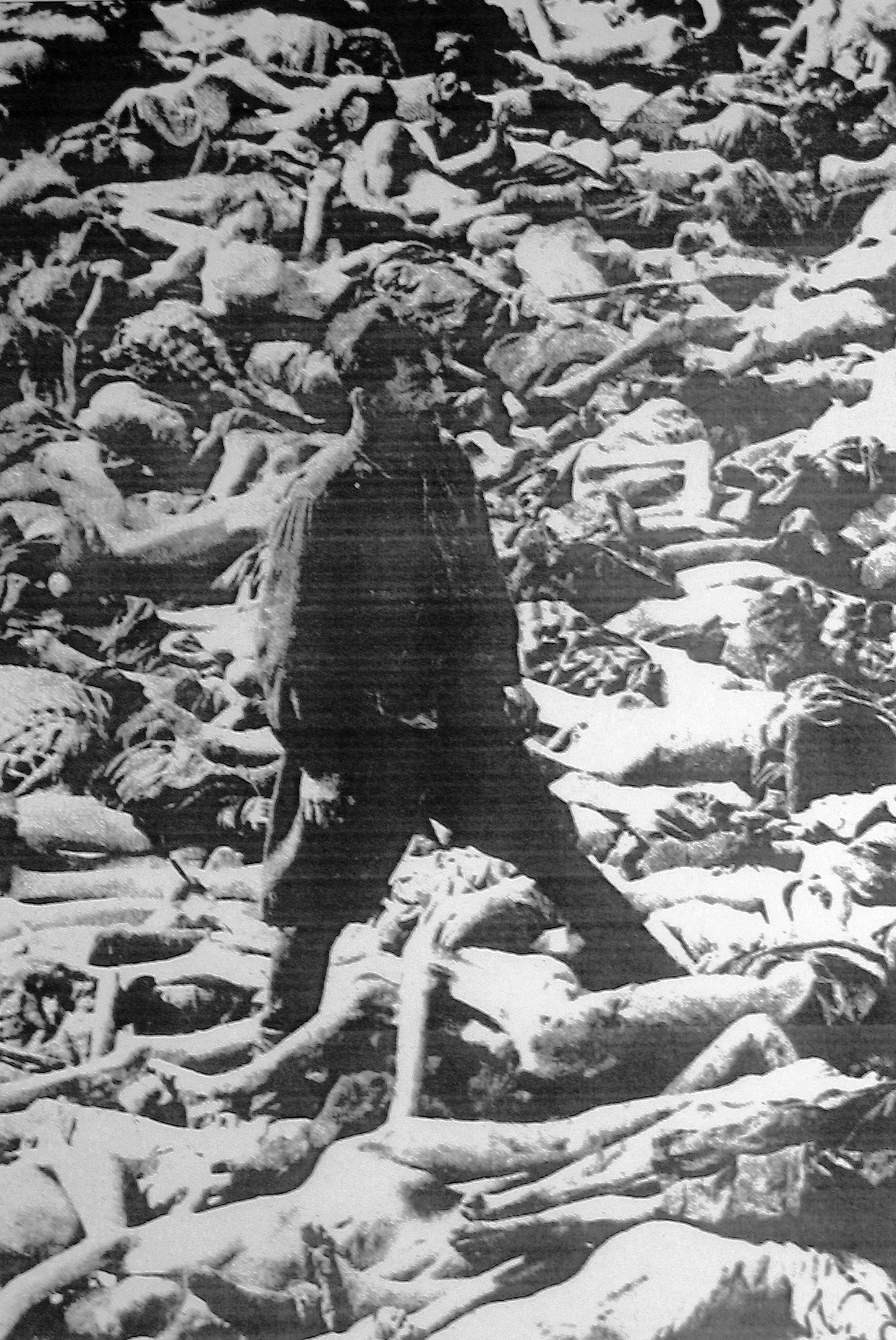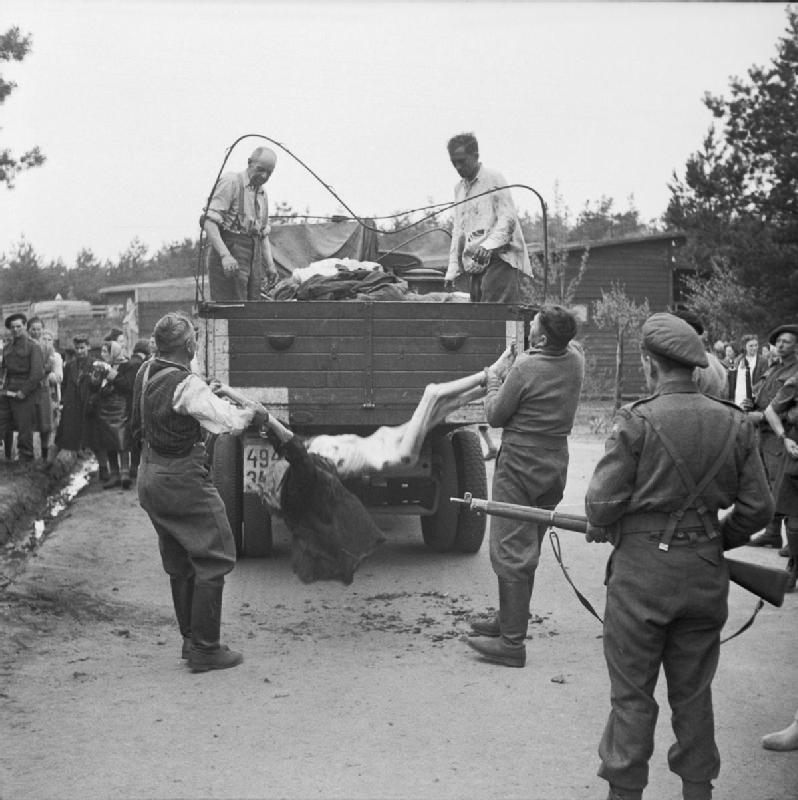|
Hamelin Prison
Hamelin Prison, also known as the ''Stockhof'', was a prison and penitentiary in Hamelin. The penal institution, which had a predecessor since 1698, existed from 1827 to 1980. It was located between the old town and the river Weser. After the Second World War, it was the site of executions carried out by the occupying British forces. The listed prison buildings are now used as a hotel. History The penal institution dates back to the ''Stockhof'' built in 1698, which housed prisoners condemned to build a fortress. The name came from the fact that the prisoners were tied to stocks in their dormitory at night to prevent escapes. A new prison was built in 1713 because of overcrowding. In 1827, a new building was built on the former site of the Hamelin Fortress directly on the Weser, from which some of the remaining remains of the building originate. There were three wings and outbuildings. This was the Royal Penitentiary, which became a Prussian prison in 1866. Nazi period Fro ... [...More Info...] [...Related Items...] OR: [Wikipedia] [Google] [Baidu] |
Hamelin
Hameln ( ; ) is a town on the river Weser in Lower Saxony, Germany. It is the capital of the district of Hameln-Pyrmont and has a population of roughly 57,000. Hamelin is best known for the tale of the Pied Piper of Hamelin. History Hameln started with a monastery, which was founded as early as 851 AD; its surrounding village became a town by the 12th century. The incident involving the "Pied Piper" (see below) is said to have occurred in 1284 and may be based on a true event, although somewhat different from the traditional tale. In the 15th and 16th centuries, Hamelin was a minor member of the Hanseatic League. In June 1634, during the Thirty Years' War, Lothar Dietrich, Freiherr of Bönninghausen, a general in the Imperial Army of the Holy Roman Emperor, lost the Battle of Oldendorf to the Swedish General Kniphausen, after Hamelin had been besieged by the Swedish army. The era of the town's greatest prosperity began in 1664, when Hamelin became a fortified border town ... [...More Info...] [...Related Items...] OR: [Wikipedia] [Google] [Baidu] |
Albert Pierrepoint
Albert Pierrepoint ( ; 30 March 1905 – 10 July 1992) was an English Executioner, hangman who executed between 435 and 600 people in a 25-year career that ended in 1956. His father Henry Pierrepoint, Henry and uncle Thomas Pierrepoint, Thomas were official hangmen before him. Pierrepoint was born in Clayton, West Yorkshire, Clayton in the West Riding of Yorkshire. His family struggled financially because of his father's intermittent employment and heavy drinking. Pierrepoint knew from an early age that he wanted to become a hangman, and was taken on as an assistant executioner in September 1932, aged 27. His first execution was in December that year, alongside his uncle Tom. In October 1941 he undertook his first hanging as lead executioner. During his tenure he hanged 200 people who had been convicted of war crimes in Germany and Austria, as well as several high-profile murderers—including Gordon Cummins (the Blackout Ripper), John Haigh (the Acid Bath Murderer) and Jo ... [...More Info...] [...Related Items...] OR: [Wikipedia] [Google] [Baidu] |
Fritz Knöchlein
Fritz Knöchlein (27 May 1911 – 21 January 1949) was a Nazi SS commander during WWII. He was tried, convicted and executed in 1949 for committing war crimes during World War II, specifically his responsibility for the Le Paradis massacre which took place on his 29th birthday. Le Paradis Massacre It was in his capacity as an SS company commander that he gained notoriety, being responsible for the 27 May 1940 massacre of British prisoners-of-war at Le Paradis in the Pas-de-Calais. Ninety-nine members of the 2nd Battalion of the Royal Norfolk Regiment, who had surrendered to his unit in a cattle shed, were stood in front of the barn wall, and Knöchlein ordered two machine-guns turned on them, followed by bayoneting and shooting any apparent survivors. Two of the prisoners, privates Albert Pooley and William O'Callaghan, managed to escape the massacre, but the remaining 97 were hastily buried along the barn wall. According to the historians Williamson Murray and Allan Millet: ... [...More Info...] [...Related Items...] OR: [Wikipedia] [Google] [Baidu] |
Bernhard Siebken
Bernhard Siebken (4 April 1910 – 20 January 1949) was a German SS commander during World War II and a convicted war criminal. He was sentenced to death for the killing of Canadian prisoners of war and was executed in 1949. Life Siebken, a driving and riding instructor, joined the SS and the NSDAP in 1931 and was one of the original members of the SS-Stabswache (March 1933) and its successor the Leibstandarte SS Adolf Hitler (LSSAH). He took part in the invasion of Poland in 1939 and went on to serve on the Eastern Front. In 1944, Seibken commanded the 2nd Battalion, 26th SS Panzer Grenadier Regiment and later the 25th SS Panzer Grenadier Regiment; both with the SS Division Hitlerjugend. Siebken was awarded the Knight's Cross of the Iron Cross on 17 April 1945. After the end of the war, he stood trial for war crimes related to his activities while in command of the 2nd Battalion, 26th Panzer Grenadier Regiment of the LSSAH. Death He was found guilty in the shootings of Canadi ... [...More Info...] [...Related Items...] OR: [Wikipedia] [Google] [Baidu] |
Emma Zimmer
Emma Anna Maria Zimmer (née Mezel; 14 August 1888 – 20 September 1948) was a female overseer at the Lichtenburg concentration camp, the Ravensbrück concentration camp and the Auschwitz-Birkenau extermination/concentration camp for several years during the Second World War. Life Mezel was born in Haßmersheim in what was then the Grand Duchy of Baden and was the eldest child of Oscar Mezel (a pharmacist) and his wife Maria née Lang. In 1938, she became a guard at the Lichtenburg early concentration camp, where she became assistant camp leader under Johanna Langefeld. She worked alongside Maria Mandl, who became a top-ranking official at the Auschwitz-Birkenau extermination camp. In 1939, Zimmer was assigned to the Ravensbrück concentration camp, where she served as assistant chief leader, then in October 1942, she became assistant camp leader at Auschwitz II (Birkenau) as an SS-''Stellvertretende Oberaufseherin''. On 1 June 1943, one month before her 55th birthday, she w ... [...More Info...] [...Related Items...] OR: [Wikipedia] [Google] [Baidu] |
Elisabeth Marschall
Elisabeth Marschall (May 27, 1886 – May 3, 1947) was the head nurse (''Oberschwester'') at the Nazi Ravensbrück concentration camp and was executed after the Hamburg Ravensbrück trials. Early life Marschall was born in 1886 and received her nursing education in Meiningen, passing the state exam in 1910. She joined the Nazi party because "Hitler could save Germany from its misery". Camp career Marschall worked as ''Oberschwester at'' Ravensbrück concentration camp from April 1943 until the camps liberation, where her duties included selecting prisoners for execution, overseeing medical experiments, and selecting around 800 prisoners to be shipped to Auschwitz. She worked with Dr. Adolf Winkelmann and Dr. Percival Treite, assisting in torture of prisoners and providing postoperative care to the subjects of their experimental operations. A survivor who worked as a prisoner-nurse testified that Marschall had loaded a group of 50 women with new-born infants onto a cart ... [...More Info...] [...Related Items...] OR: [Wikipedia] [Google] [Baidu] |
Dorothea Binz
Dorothea "Theodora" Binz (16 March 1920 – 2 May 1947) was a Nazi German officer and supervisor at Ravensbrück concentration camp during the Holocaust. She was known as one of the most brutal, ruthless and sadistic overseers in the Nazi system. She was executed for war crimes on 2 May 1947. Early life Born to a lower middle-class German family in Försterei Dusterlake, Brandenburg, Germany, Binz attended school until she was 15. Atrocities at Ravensbrück concentration camp She volunteered for kitchen work at Ravensbrück in August 1939, when she was aged 19, and was given a position of '' Aufseherin'' (female overseer) the following month. Binz served as an ''Aufseherin'' under ''Oberaufseherin'' Emma Zimmer, Johanna Langefeld, Maria Mandl, and Anna Klein. Though she worked under higher-ranking guards, Binz was known as "the true star of the camp", and the "chief guard was completely overshadowed by her deputy." She worked in various parts of the camp, including the kitchen ... [...More Info...] [...Related Items...] OR: [Wikipedia] [Google] [Baidu] |
Ruth Neudeck
Ruth Closius-Neudeck (5 July 1920 – 29 July 1948) was a Nazi ''Schutzstaffel'' (SS) supervisor at a Nazi concentration camp complex from December 1944 until March 1945. She was executed for war crimes for her role in the Holocaust. Early life Ruth Closius was born in Breslau, Germany (now Wrocław, Poland). She hoped to become a nurse, but worked a saleswoman in a textiles warehouse. She later married and was known as Ruth Neudeck or Ruth Closius-Neudeck. Atrocities in Nazi concentration camps In July 1944, she arrived at the Ravensbrück concentration camp to begin her training to be a camp guard. Neudeck soon began impressing her superiors with her unbending brutality towards the female prisoners, resulting in her promotion to the rank of ''Blockführerin'' (Barrack Overseer) in late July 1944. In the Ravensbrück camp, she was known as one of the most ruthless female guards. Former French prisoner Geneviève de Gaulle-Anthonioz commented after the war that she had seen N ... [...More Info...] [...Related Items...] OR: [Wikipedia] [Google] [Baidu] |
Vera Salvequart
Vera Salvequart (26 November 1919 – 26 June 1947) was a Sudeten German nurse and kapo at Ravensbrück concentration camp from December 1944 to 1945. In 1947, she was executed for war crimes during the Holocaust following the Ravensbrück Trials. Nazi concentration camps Born in Ohníč in Czechoslovakia in 1919, she moved to Germany sometime afterwards. She was first arrested in 1941 for having a relationship with a Jewish man and for refusing to divulge his whereabouts to the Gestapo. She served 10 months in a prison in Flossenbürg concentration camp for that, and then in 1942, she was again arrested for another relationship with a Jew and served another two years in prison. On 6 December 1944 she was arrested on charges of helping five detained officers escape, and was then sent to Ravensbrück, which had become a death camp for female prisoners at that point in the war. She served in the camp's medical wing as a nurse during her stay, and oversaw the gassing of tho ... [...More Info...] [...Related Items...] OR: [Wikipedia] [Google] [Baidu] |
Fritz Klein
Fritz Klein (24 November 1888 – 13 December 1945) was a Romanian-German Nazi doctor and war criminal, hanged for his role in atrocities at Auschwitz concentration camp and Bergen-Belsen concentration camp during the Holocaust. Early life, education, and Nazi soldier Klein was born in Feketehalom, Austria-Hungary (now Codlea in central Romania). Klein was considered a , or ethnic German. He studied medicine at the University of Budapest and completed his military service in Romania, finishing his studies in Budapest after World War I. He lived and worked as a doctor in Siebenbürgen (Transylvania), Romania. In 1939, as a Romanian citizen, he was drafted into the Romanian army, where, after the outbreak of the war with the Soviet Union in 1941, he served as a paramedic on the eastern front. In May 1943, Romanian fascist dictator Marshal Antonescu, on a demand from Hitler to release ethnic Germans in the Romanian Army, drafted them into the German army. Hence Klein becam ... [...More Info...] [...Related Items...] OR: [Wikipedia] [Google] [Baidu] |
Josef Kramer
Josef Kramer (10 November 1906 – 13 December 1945) was a in the SS and the Commandant of Auschwitz-Birkenau (from 8 May 1944 to 25 November 1944) and Bergen Belsen (from December 1944 to its liberation on 15 April 1945) concentration camps. Dubbed ''The Beast of Belsen'' by camp inmates, he was a German Nazi war criminal, directly responsible for the deaths of thousands of people. He was detained by the British Army after the Second World War, convicted of war crimes, and hanged on the gallows in the prison at Hamelin by British executioner Albert Pierrepoint. Early life Josef Kramer, an only child, was born and raised in Munich in a middle-class family. His parents, Theodore and Maria Kramer, brought him up as a strict Roman Catholic. In 1915, the family moved from Munich to Augsburg, where Josef Kramer attended school. He began an apprenticeship as an electrician in 1920. From 1925 to 1933, except for working in a department store and as an accountant, he was mostly unem ... [...More Info...] [...Related Items...] OR: [Wikipedia] [Google] [Baidu] |
Belsen Trial
The Belsen trials were a series of several trials that the Allied occupation forces conducted against former officials and functionaries of Nazi Germany after the end of World War II. British Army and civilian personnel ran the trials and staffed the prosecution and judges. The Belsen trials took place in Lüneburg, Lower Saxony, Germany, in 1945 and the defendants were men and women of the ''Schutzstaffel'' as well as prisoner functionaries who had worked at various concentration camps, notably Auschwitz and Bergen-Belsen. The first trial generated considerable interest around the world, as the public heard for the first time from some of those responsible for the mass murder in the eastern extermination camps. Some later trials are also referred to as Belsen trials. First trial Officially called the "Trial of Josef Kramer and 44 others", the trial began in a Lüneburg gymnasium on 17 September 1945, within the British occupation zone. The defendants were 45 former SS ... [...More Info...] [...Related Items...] OR: [Wikipedia] [Google] [Baidu] |





